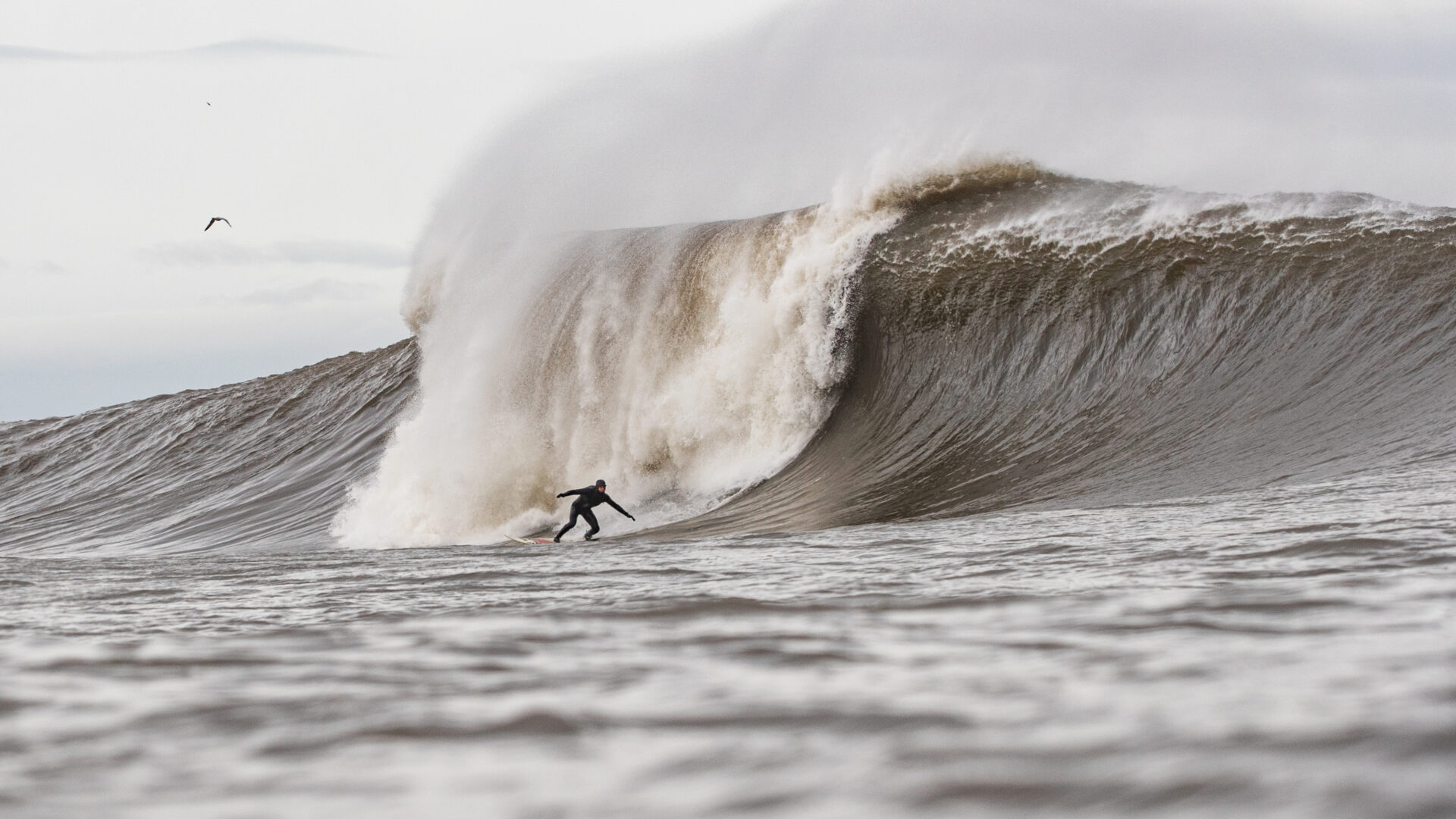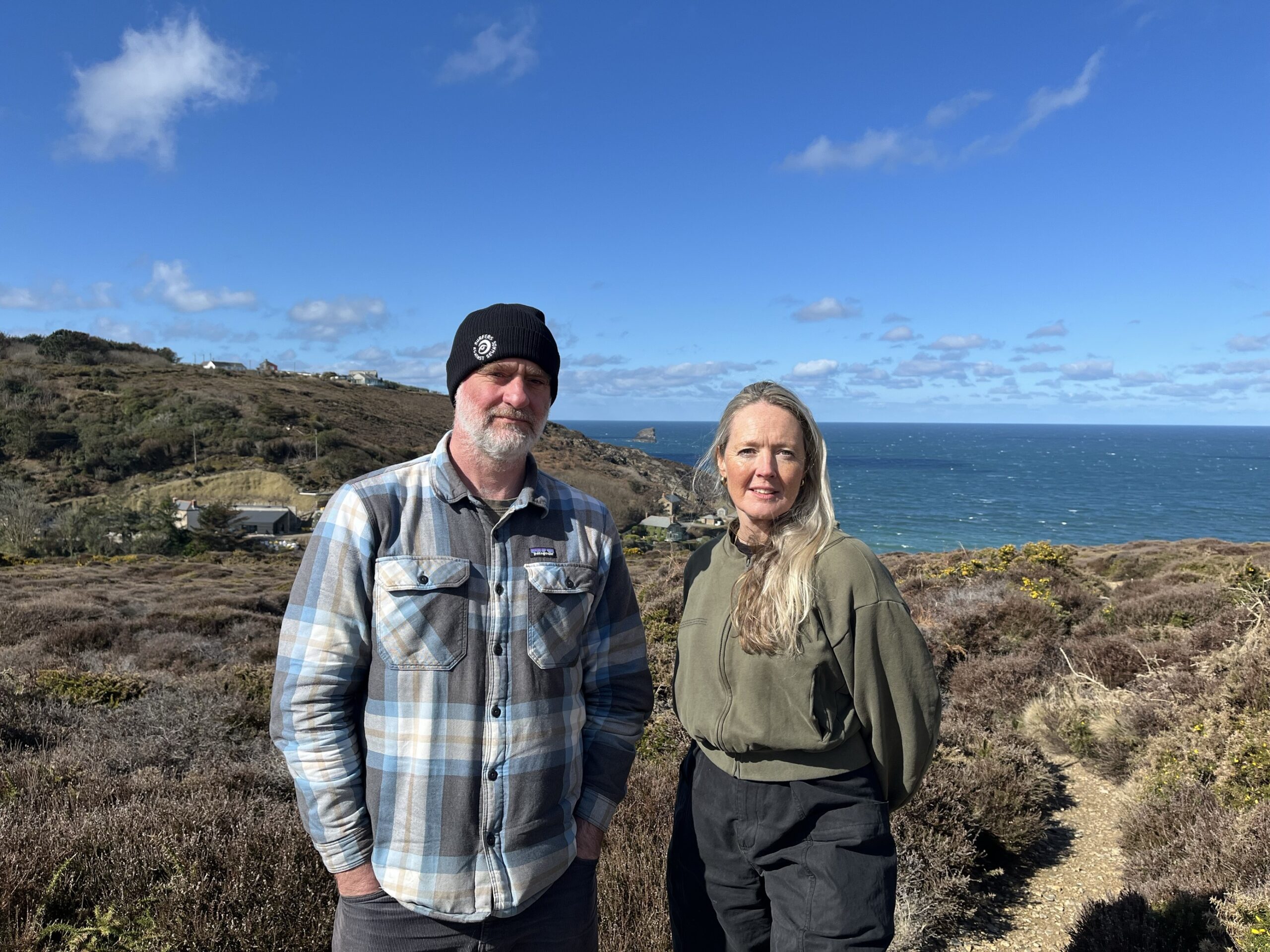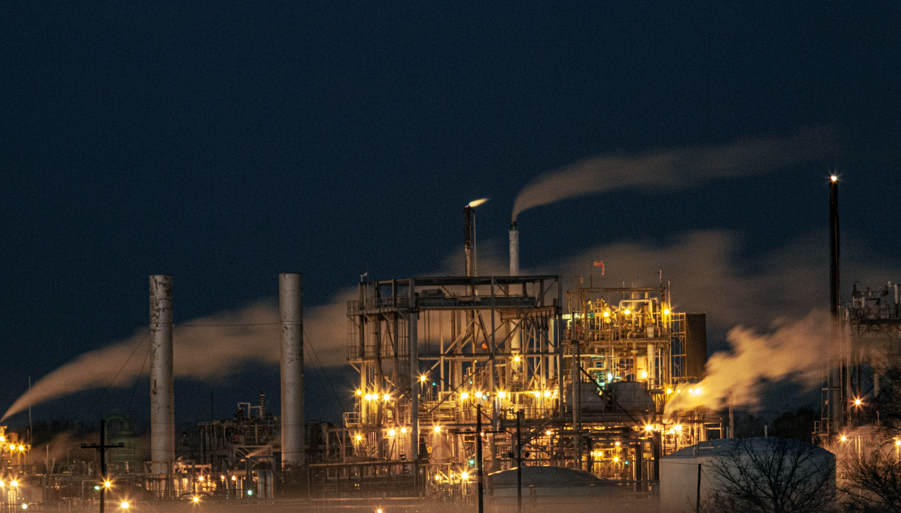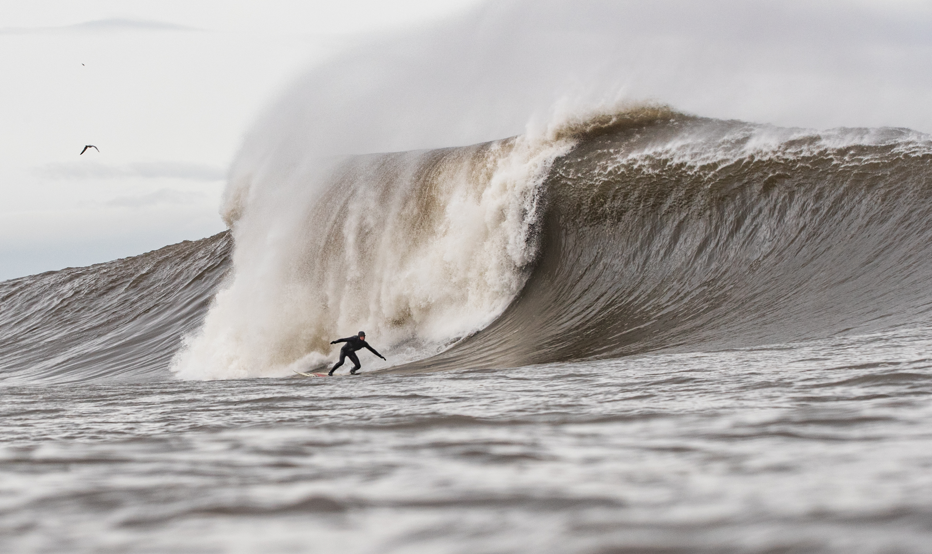
Surfers Against Sewage partners with The Big Sea
The Big Sea film tour: Surfers Against Sewage joins forces with filmmakers to spotlight the surf industry’s toxic problem
Surfers Against Sewage and The Big Sea have joined forces for a special UK screening tour of the award-winning film this spring.

Image: SAS Director of Fundraising Pete Lewis and The Big Sea Producer Demi Taylor
From St Agnes to Scotland, the independent documentary is screening at key cinemas and venues across the UK accompanied by filmmaker Q&A’s and panels with activists and Surfers Against Sewage campaigners. A full schedule of dates and locations to be announced.
The Big Sea premiered November 2024 and has already shaken up the surf industry. The film is an exposé of surfing’s dirty secret, its links to Cancer Alley and the devastating impact that Neoprene production is having on the community living nearby. This infamous area, along the banks of the Mississippi River, has cancer risks fifty times the US national average due to toxic chemical emissions from the Neoprene plant. Once the site of a former slave plantation, it’s now the only facility in the U.S. that manufactures chloroprene- the key chemical compound in Neoprene, the synthetic material that most wetsuits on the market today are made of.
Created by surfers and filmmakers Demi Taylor, Lewis Arnold and Chris Nelson, The Big Sea uses the lens of surfing to unwrap the confronting issues of environmental racism, greenwashing and the surf industry’s toxic addiction to Neoprene. Juxtaposed with stunning surf cinematography, the shocking narrative is told through the lived experiences of the River Parish activists campaigning for clean air and includes insights from scientists, experts, environmental campaigners and industry insiders.

Image: Chloroprene Plant in the USA. Credit The Big Sea
The film also highlights the sustainable alternative natural rubber, which literally grows on trees. More and more brands and surfers are choosing this non-toxic alternative to Neoprene, but many surf industry bosses are still shying away from the problem. While shining an uncomfortable light on the industry, the film is a call to action for the power that we have as individuals to effect change.
Pete Lewis, Director of Fundraising at Surfers Against Sewage, who has campaigned with the charity for 15 years said: “Surfing is part of our DNA at SAS, and The Big Sea’s message hit home, hard. This is a hugely important documentary linking toxic chemicals to the products that we use to play in the sea, and we are really proud to be playing a part in taking the critical message of this film far and wide to communities up and down the country.
“For years we have shown that when people come together to campaign, real change can be made. As a surfing and watersports community, we have a real opportunity to drive change within the industry, leading the charge on phasing out Neoprene production.”
“We’re incredibly proud to have the support of Surfers Against Sewage,” says Demi Taylor, producer of The Big Sea. “The original ocean activists, SAS has an incredible heritage and community, and for the last 35 years has been unafraid to speak truth to power to effect real change. It’s an important and powerful statement that the charity is lending its voice to this film and campaign, putting planet and people first.”

Credit The Big Sea
From filmmakers and lifelong surfers Lewis Arnold and Chris Nelson, The Big Sea is an award-winning, documentary exploring the toxic nature of Neoprene production and surfing’s links to Cancer Alley.
Using the lens of surfing to unwrap issues of environmental racism, social justice, corporate responsibility and greenwashing, The Big Sea is a life and death tale of two seemingly unconnected communities which explores the power we have as individuals to effect change.
Neoprene has long been an integral part of the surf lifestyle, with wetsuits granting access to previously unridden realms and helping many forge a greater connection with the ocean environment. However confronted with the human cost of Neoprene production, and with a greener alternative readily available, will the $2820 million wetsuit industry clean up its act and end its toxic relationship with Neoprene? As the poster-child for Neoprene, will surfing use its position to turn the tide and #saynotoneoprene.
The vast majority of wetsuits on sale today are made of Neoprene. Neoprene is the commercial name for chloroprene rubber, a synthetic rubber invented by chemical company DuPont in 1931 as a replacement for natural rubber. While it has a wide range of applications within the automotive, building, active and leisure-wear fields, surfing and wetsuits are the poster child for the Neoprene industry.
Chloroprene is a toxic and carcinogenic chemical from which ALL chloroprene rubber is manufactured. Exposure to chloroprene emissions, released during the manufacture of this synthetic rubber, has been linked by the US Environmental Protect Agency to an elevated cancer risk.
Japanese chemical giant Denka makes the majority of chloroprene rubber chips used by the surfing industry. They have two factories, one in Omi, Japan and one in Cancer Alley, Louisiana, the sole chloroprene plant in the USA. Until 2015, the US chloroprene plant ‘The Pontchartrain Works’ was owned and operated by DuPont.
The Pontchartrain Works opened 1968 and rises from the foundations of the former Belle Pointe plantation where 150 slaves worked the land.
Cancer Alley is a corridor of land than runs along the banks of the Mississippi between New Orleans and Baton Rouge. This area is now home to over 150 petrochemical plants and factories – many of which are sited on former slave plantations. Through sustained monitoring, the US Environmental Protection Agency has confirmed that, of all the chemical plants in this area, the community living in the shadow of the Denka plant has by far the highest cancer risk in the US – 50 TIMES the national average. The EPA confirms this is due to chloroprene emissions.
The population impacted by the pollution from Denka is over 90% minority, low income and this situation has been cited as a classic case of environmental racism.
There’s a lot of misleading information circulated regarding the environmental credentials of so-called ‘Limestone Neoprene’. ‘Limestone Neoprene’ is still chloroprene rubber, made from chloroprene, prefaced with a bit of marketing to make it sound friendly. Its manufacture begins with limestone being quarried from the ground using energy-intensive heavy machinery. It is then super-heated in a furnace to produce Acetylene before undergoing further energy-intensive steps to eventually produce chloroprene. If this doesn’t sound very environmentally friendly, it’s because it isn’t. In essence, it’s the same principle as petrochemical Neoprene in that a non-renewable carbon source and carbon sink is removed from the ground and processed in an energy-intensive way, to produce chloroprene. It has the same chemical structure as petrochemical Neoprene. Limestone Neoprene is not a clean, green, sustainable alternative. This is simply greenwashing.
Yes. There are currently a number of natural rubber materials on the market including Yulex. FSC and PEFC certified Yulex was created and developed in tandem with Patagonia and fully adopted by a number of brands including Finisterre, Oxbow and Seea. The materials are sourced from certified deforestation-free rubber tree forests via equitable agriculture practices. Performance-wise it’s proven to be just as stretchy, warm, durable and comfortable as synthetic rubber with the added bonus it’s cheaper, renewable, biodegradable and literally grows on trees. Through research, Yulex claims that using their natural rubber vs neoprene reduces the carbon footprint of a wetsuits by at least 80%. As a result, more brands have begun to offer natural rubber wetsuit models within their range.
This is an important question to ask as supply chains and the lack of transparency around them are at the root of many issues; deforestation contributes to loss of biodiversity, climate change and soil degradation. Fortunately, it’s easy for brands to to examine their supply chains and confirm where the natural rubber they’re sourcing comes from. For example Yulex use only certified deforestation-free rubber and they explore this in detail on their website. Ocena, currently the other major natural rubber option available for wetsuits, is also FSC certified. The onus is on brands to clearly demonstrate that they have sourced their natural rubber responsibly and should be open to answering questions from their customers about this.
The most environmentally conscious decision you can make as a consumer and as a surfer is to keep wearing, caring for, and repairing the wetsuit you own. When you’re in a position to buy a new wetsuit, that’s the time to invest in a natural rubber alternative, and there’s now a wide range of choices out there. You can influence the decisions of surf shops and surf brands by voting with wallet and by talking to your local surf shop about why you’re choosing to buy a natural rubber wetsuit. If your old Neoprene wetsuit still has some life in it, look at passing it on, or donating it to one of your local surf charities or surf clubs.
In 2020, at the start of filming, just four surf brands wetsuit ranges were entirely Neoprene-free including pioneers Patagonia who shared the Yulex natural rubber technology industry-wide in 2016. Four years on, thanks in part to the campaigning of The Big Sea, more than 20 additional surf brands have introduced or committed to introduce natural rubber to their wetsuit ranges.
Surfing may be the poster child for the Neoprene market, which according to Globe Newswire is forecast to reach 504,300 tons by 2028, but this toxic material is used in numerous applications. Neoprene is used in industries from automotive and construction to leisure and fashion – think: sneakers, luggage, cycling, golf, fishing, swimming, sailing, diving, climbing, yoga and fitness accessories. And natural rubber alternatives could be utilised in all these applications
As individuals we can vote with our wallets. It’s a powerful tool and we can choose the brands we support, the product we buy. The next time you’re in the market for a wetsuit, or any product with Neoprene, take time to think about the true cost of what you’re buying.
You can also lobby your favourite surf (or cycling, swimming etc.) brand or shop, ask them to truly investigate their supply chains and invest in sustainable alternatives. You can inform your community, your line up and your friends to choose the more sustainable option and help to phase out Neoprene production.
As individuals we have choice and if we come together as a community, we have power.
